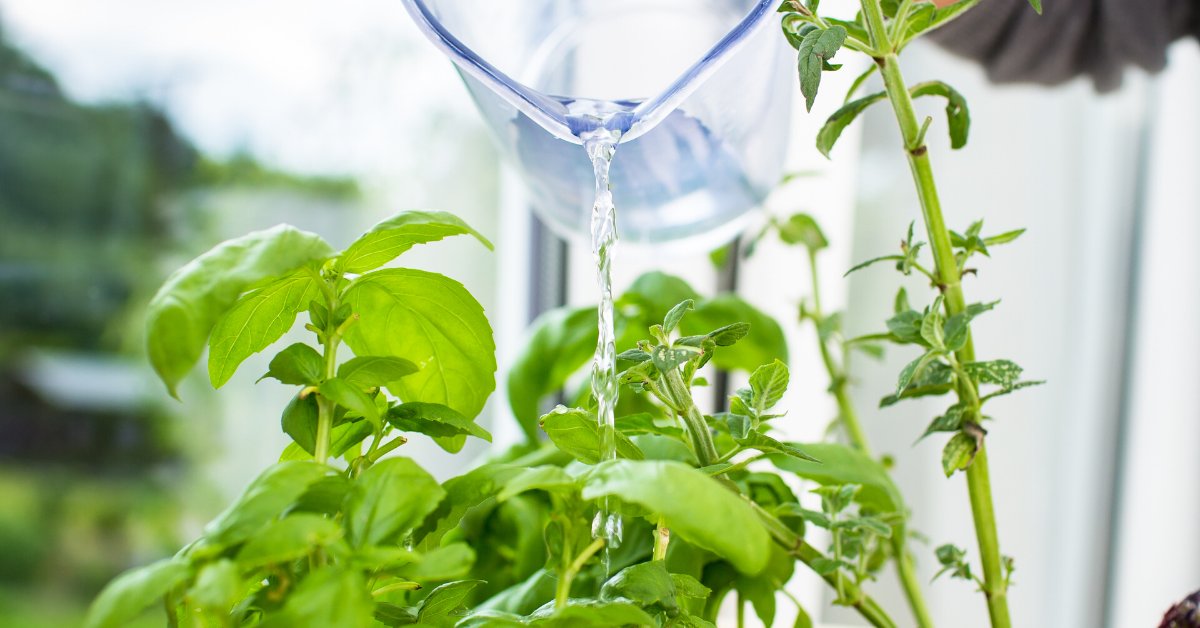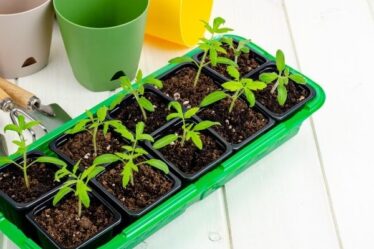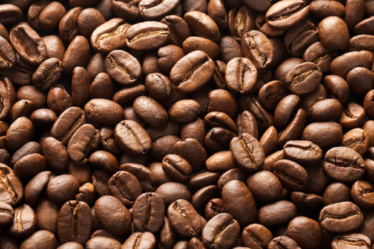
Watermelons are an absolute favorite all around the world when it comes to delicious fruits. With dozens of fruits to choose from, all varieties of watermelons are delightful, enjoyable, tasty and of course, filled with important nutrition.
Watermelons are a high-water content fruits, but they are still in nutrition. A single serving of this fruit doesn’t just replenish our body’s need for hydration but also gives us a healthy boost of Vitamin C, amino acids and lycopene. At the same time, being low in calories, this is a great fruit that can be eaten in a huge amount without risking our health.
It is also possible to grow your own watermelon in your kitchen garden instead of having to depend on your local grocery store for good produce!
Can You Plant Watermelon Seeds from a Store-Bought Watermelon?
We all know that watermelons come filled with dozens of seeds inside them. This is actually the only annoying side of these delicious fruits! However, it is possible to use the seeds collected from a store-bought watermelon or a preciously grown watermelon to start your very own watermelon garden.
If this is something you want to experiment with, there is a strict guideline to follow. The seeds collected from a fresh watermelon first needs to be patted dry with a piece of soft cloth or tissue. The seeds can also be dried using artificial methods because they cannot be chill or wet when planted. Placing the seeds under the window when the sun is at its brightest for a few hours will appropriately dry the watermelon seeds and make them suitable for planting directly.
When the time is right, the dried watermelon seeds should be individually planted into potting soil in small pots or cups. Only when seedlings sprout from the seeds in a few weeks, they should be transported to a garden or a raised garden bed.
If the time to replant the watermelon seeds isn’t right, they can also be stored for a few months in a sealed pack until the temperature is right for planting.
How Can You Grow Watermelons at Home?
• Planting:
All varieties of watermelons are, of course, summer fruits. Therefore, watermelons also need to be planted in late spring, or at best, in early summer.
As mentioned before in this article, watermelon seeds can be collected from store-bought fruits and dried, and even stored for the next year’s harvest. Alternatively, ready-to-plant seeds can also be bought from your local garden shelter for instant planting.
The seeds need to be planted in individual containers or cups to germinate; afterwards, they need to be transferred to your kitchen garden or a raised garden bed for growing into their actual size.
Since watermelons are quite large fruits, adequate spacing is required. This also means these plants should be ideally planted in a garden rather than in a container. If you want to grow watermelons in containers, you are going to need rather large ones and one container could only hold one, or at best, two watermelons.
• Soil:
Watermelon seeds should only be planted when the soil temperature is 70°F or above, which will happen a few weeks after the last and final frost has passed. This is why it is better to wait until late spring to plant watermelon seeds so that the soil would be ready.
Slightly acidic and loamy soil is the perfect one for growing watermelons, with a pH level of 6.0 to 6.8. The soil also needs to be prepared well in advance with the right kind of fertilizer for watermelon plants to get nourished as these plants require a nutritious environment to grow.
At the same time, the soil needs to be moist and well-drained. Cover the patch of soil you want to plant watermelon seeds in with a piece of place a few days before planting so that the ground retains all the heat and becomes exactly the temperature it should.
• Spacing:
A single watermelon plant can spread around the origin very quickly, which is why each seed or seedling needs to be planted at least 5 to 6 feet apart.
• Fertilizer:
Watermelon plants are extremely heavy feeders. The soil where you want to plant watermelon seeds needs to be prepared in advance, mixed with aged manure and organic compost. Other specialized fertilizers, specifically one that is high in nitrogen, needs to be added to the soil if your acidity level isn’t up to the mark.
When flowers start to bloom, potassium and phosphorus-based fertilizer should be added.
• Sunlight:
Watermelon seeds should be dried under harsh sunlight to make them ready for harvesting. In the same way, young watermelon plants require the help of the sun a good deal to prosper. Ideally, these plants are placed not in a plain but in a slightly raised row known as hills so that the soil drains well and also so that the plants can get adequate sunlight.
• Watering:
These plants need sunlight and fertilized soil more than water, regardless of where they are being grown in the world. Watermelon plants, in their prime, only needs watering about once a week and not more than 2” of water every week. The soil underneath the plants should be moist but not soggy or wet constantly.
Two weeks before harvesting is due, watering should be stopped completely, which will lead the fruits to taste sweeter.
• Weeding and Pest Control:
Weeds are most likely to grow around watermelon plants, especially as the plant itself sprawls along the ground. Weeds should be regularly removed from the area as soon as they appear or black plastic mulch can be added to the soil to control the weed situation.
The most common pests around watermelon plants are usually aphids, vine borers and cucumber beetles which can be controlled by planting the right companion plants in the area.
• Harvesting:
Watermelons are fast-growing fruits. It takes these fruits only two weeks to ripen completely and be ready for harvesting.
It is possible to know if a particular watermelon is ripe by:
• Thumping the rind to see if it makes a deep hollow sound,
• Check the field spot for a cream or pale-yellow color and
• Check the curly tendril to see if it has completely dried out.
Harvested watermelon can be kept in a dark and cool corner of your house for at least a few days before eating, selling or giving them out.
Frequently Asked Questions (FAQs) About Growing Watermelons as a Beginner
• Should You Soak Watermelon Seeds before Planting?
No; in fact, watermelon seeds need to be dried under the sun before planting them. If the seeds are wet, they will not germinate at all.
• Does Milk Help Watermelons?
Milk can actually help watermelon plants in prospering, growing and the seeds in germinating. If watermelon seeds are soaked in milk before drying them in the sunlight, they actually germinate much faster. If you live in a cold region where days of summer are limited, you can speed up the entire process by germinating the seeds faster in this process.
Later, when the watermelon seeds grow and sprawl away from the source, milk can be sprayed on the vines and the leaves to prevent a common watermelon fungus, resembling powdery mildew.
From planting next to these plants, would be spinach, radishes, lettuce and similar salad green. Potatoes and cucumbers can also be a good option for vegetables to grow beside these plants, but plants with extremely pungent-smelling yields such as garlic or onion should be avoided and kept far away.
• How many Watermelon Seeds Should I Plant in a Single Hole?
To make certain that none of the space is wasted, at least 4 to 5 watermelon seeds should be planted in a single hole, at least 5 feet away from another hole. If you are planting already prospering seedlings, one in each hole should ideally be enough.
• How Many Watermelons Can I Get in Each Plant?
Since watermelon plants will spread horizontally in almost every direction, it can become difficult to assess which fruits belong to which plant. However, on average, a regular watermelon plant can yield 2 to 4 regular-sized watermelons.
• How Can I Increase the Size of my Watermelons?
Adequate and proper watering is needed if you want your watermelons to reach their best possible size. Watermelon plants need to be watered deeply and regularly but when the soil has a good drainage system. The water needs to wet the soil and leave, not stand still with the soil. Besides, regular watering is very important just after adding fertilizer on top of the soil, so that the fertilizer can seep through the deepest end of the soil.
Most importantly, watering needs to stop at least two weeks before the watermelons are to be harvested so that the size and the taste of the fruit increases.
• Why are My Watermelon Seeds Not Germinating?
If your watermelon seeds aren’t germinating perfectly, it could be: • Because the seeds haven’t been dried properly, which it needs to do directly under the sun for a few hours. • Because the soil isn’t warm enough, which should at least be 70°F or above. • Because the soil in your garden isn’t ready yet after the last frost has passed.
• Why Are My Watermelons So Small?
If your watermelons are growing smaller than they should, this could be because of the climate or the weather you are experiencing. If the temperature of the soil is under 60°F, the watermelons would grow smaller and mature before they’ve reached their expected size.
In the same way, if your watermelon plants have been attacked by aphids, they would cause the fruits to become smaller as they mature. It is therefore very important to look for and remove aphids from your crop.
• How can You Make Seeds Germinate Faster?
Watermelon seeds will germinate faster if they are soaked in room temperature milk and then dried in the sun. This is a foolproof technique that speeds up the germination process if you live in a climate with very few summer days.
• Can You Put Epsom Salt on Watermelon Plants?
Yes, spraying a mixture of water, Epsom salt and household borax on your watermelon plants can affect the flavor of the fruits positively. If you don’t want your watermelons to taste watery or bland, this is a fertilizer that needs to be added to your plants – all over the fruits, leaves and vines – when the watermelons are between 1” and 2” in diameter.
• Do Watermelons Come Back Every Year?
Neither watermelons nor the watermelon plants come out automatically every year. Rather they have to be planted every year in late spring or early summer to enjoy watermelons a few weeks later.
• How Do Watermelons Grow Sweeter?
Watermelons can end up tasting sweeter if you can give your plants a nutrition boost of boron. This kind of fertilizer can be bought at any local garden center or even made at home using household borax and water. Spraying a mixture of borax, water and Epson can actually make your fruits taste much sweeter.
• What Do You Put Under Growing Watermelons?
If the variety of watermelons you are using produces large fruits, it might be a good idea to create a barrier of straw or cardboard between the fruit and the ground to minimize the risk of diseases, pests and rotting.
• Should I Trim Watermelon Vines?
Trimming parts of your watermelon plants can actually give the chance for healthier vines, leaves and fruits to grow. This is a good idea to trim old vines for the overall health of the watermelon plants.
Watermelons are just about the most perfect fruits for hot summer days because of their high water content and their refreshing taste, perfect as whole fruit, in fruit salad, as juice or in a smoothie. They are quite easy to grow and maintain, although a few plants may take up a lot of space in your garden. Still, growing your own watermelons mean you can have your favorite fruit any day of the summer, for as long as you want to.\


